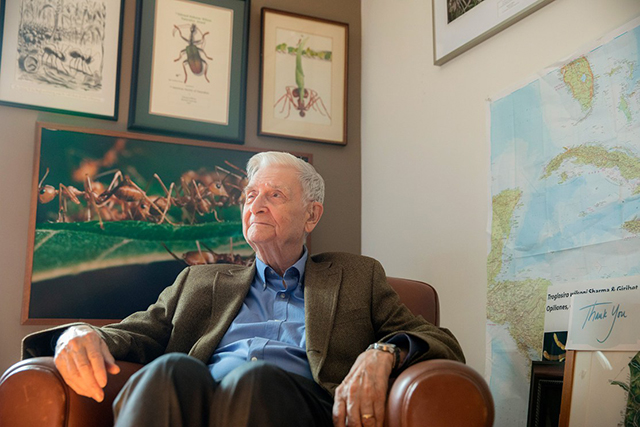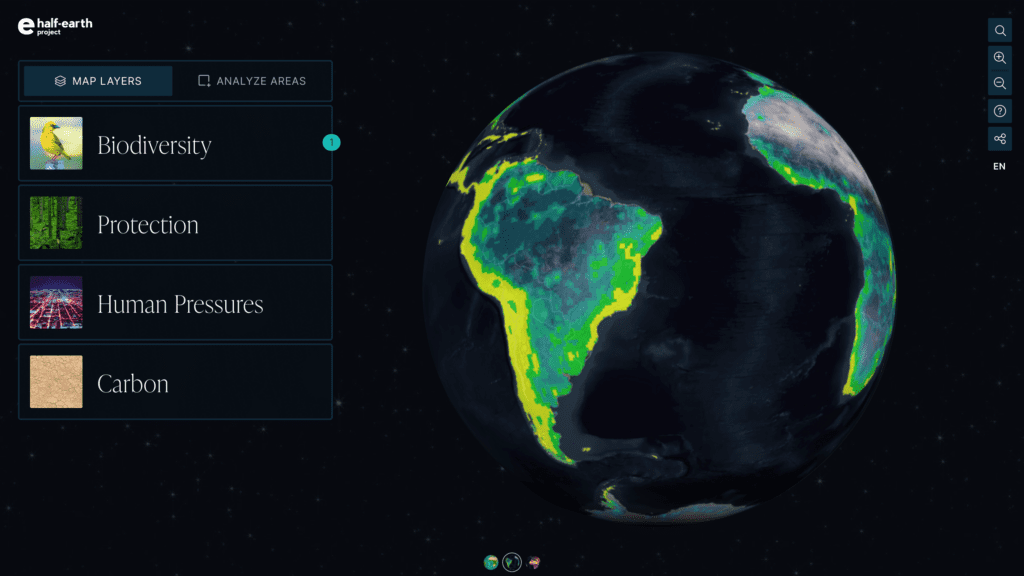Why Half?
In 2016, E.O. Wilson wrote a book called Half-Earth: Our Planet’s Fight for Life. In that book was a promise: if we protect half the Earth’s land and sea and manage sufficient habitat to safeguard the bulk of biodiversity, living Earth can continue to breathe. Half-Earth aims to solve a problem, what E.O. Wilson calls “the next big thing.” The problem we need to turn our attention to beyond the changing climate is the loss of the very fabric of our planet, the loss of biodiversity.

With Half-Earth, E.O. Wilson’s intention was to create a “moonshot” goal, a human endeavor that ensured we would leave no species behind. This is not just important conceptually, it’s important inspirationally. If you look at history, this is the sort of ambitious goal that drives change.
Habitat size and the number of species it can sustainably support are mathematically related, not linearly, but by the 4th root. The current amount of globally-protected earth and sea area (about 15 percent) is insufficient. Current mathematical predictions estimate we’ll lose half of all species before the end of the century. Half-Earth is a global approach, because the science demonstrates that by protecting half overall enough species will survive to keep our own needs intact. As a solution, it also has just the right mix of simplicity and latent power to embody hope and activate participation. Examined in detail any given area on the planet has a unique contribution to make to the overall goal of half.
Because biodiversity is not evenly distributed, not all places are equally important contributors to the goal of Half-Earth. Some places harbor so many species, including rare and unique species, that they deserve special attention. However, every place on the planet can make a contribution, and likely has unique species to protect even if the place is not a biodiversity hotspot from the global perspective.
The E.O. Wilson Biodiversity Foundation’s Half-Earth Project is mapping the geospatial location of all Earth’s species at a high resolution in order to transform our understanding of the world and inform which places offer the most effective path forward for the protection of endangered species and endangered ecosystems.
Places with high priorities for conservation we call Places for a Half-Earth Future®. These places have extraordinary species richness and rarity that are currently unprotected.
To help identify these places, our team has supported the creation of new metrics of conservation success, including the Species Habitat Index (SHI), the Species Protection Index (SPI), and the Species Information Index (SII).
Users can see the SPI National Report Card for the protected places identified in every nation on Earth, including Marine protected areas. The SPI score varies from 0-100 representing how many vertebrate species are sufficiently represented in a country’s conservation areas and how much of the global responsibility for the species a country holds. Report cards show additional areas that should be prioritized in order to best protect the species that a region uniquely contributes to global biodiversity.
The science of the Half-Earth Project is open-access, democratizing this information and giving everyone the power and information they need to know what to do and where. As we continue to build this out, we aim to engage not just decision-makers, but people everywhere to imagine, together, what this could look like and how they can participate through their lives and careers to the stewardship of our planet.
We need a more complete understanding of all the species of our planet, including their locations and connections. By identifying more fully with all of life and with each other, we can support a more enduring ethic to care for our planet.

EXPLORE MORE
EXPLORE
LEARN

